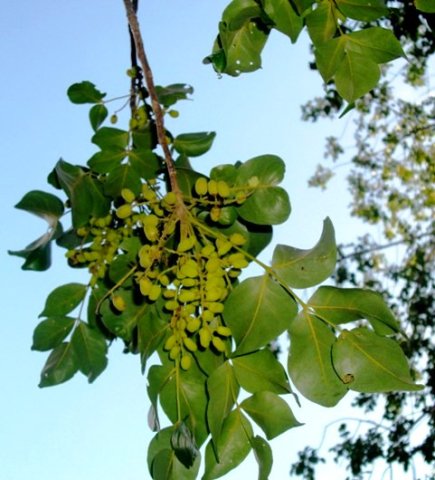Canthium armatum

Canthium armatum, commonly the false turkey-berry or the armed turkey-berry, in Afrikaans the valsbokdrol (false goat turd) and previously scientifically known as Plectroniella armata, is a multi-stemmed spiny shrub or small tree (SA Tree List No. 715).
The leaves are simple, growing opposite or in fascicles on spur-branchlets below the spines. The leaf shape is ovate or elliptic with entire margins. The leaf tip is broadly tapering or rounded; the base also tapers broadly. Leaf surfaces are shiny dark green and hairless above, pale below, sometimes with soft, short hairs. There are three pairs of lateral veins and net-veining visible beside the conspicuous midrib.
The green fruits seen here in January may become 1,5 cm long. They grow in drooping clusters on slender stalks. The fruits are fleshy drupes, more or less rounded, but variably so. They become yellowish orange and later red when ripe, which may happen at any time from summer to the coming winter. Each edible fruit contains from one to four seeds. Birds also eat them.
It grows in the far northeast of South Africa, in Limpopo, Mpumalanga and KwaZulu-Natal, as well as in Swaziland and southern Mozambique.
The habitat is hot, low elevation bushveld or thicket, coastal forest, mopane woodland and rocky slopes. The species is not considered to be threatened in its habitat early in the twenty first century (Coates Palgrave, 2002; Van Wyk and Van Wyk, 1997; http://redlist.sanbi.org).

